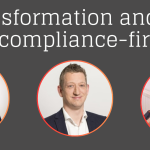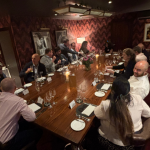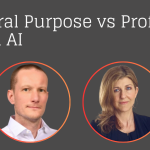Where are the biggest advances and enduring challenges when it comes to generative AI adoption and change management, particularly when it comes to the ‘people’ side of people, process and technology? That was the question posed by Legal IT Insider’s editor Caroline Hill during a dinner hosted in partnership with Definely in October, where 13 legal leaders shared their experiences as to what is working – and not working – in this fast-moving legal world.
In terms of Copilot rollouts, one CIO said that adoption has been surprisingly high and smooth sailing, including among partners and senior lawyers. It is worth noting that the firm provided intense stakeholder management, training and education, and feels that is a significant factor.

Sharmila Rangasamy, a senior knowledge manager at offshore law firm Harneys said: “I was really surprised that the firms that had deployed Copilot were seeing over a +95% daily usage rate (of the people it was deployed to).”
 Sam Dixon, chief innovation officer and a partner at transatlantic firm Womble Bond Dickinson, added: “One thing to consider having in the mix was the point about not overlooking more senior lawyers when trying to drive adoption. Every cohort has its range of individuals from innovators to laggards and the social influence which senior lawyers can have on adoption once converted can be disproportionate. Plus their experience means they are well positioned to spot nuanced issues with AI responses.”
Sam Dixon, chief innovation officer and a partner at transatlantic firm Womble Bond Dickinson, added: “One thing to consider having in the mix was the point about not overlooking more senior lawyers when trying to drive adoption. Every cohort has its range of individuals from innovators to laggards and the social influence which senior lawyers can have on adoption once converted can be disproportionate. Plus their experience means they are well positioned to spot nuanced issues with AI responses.”
It’s not all smooth sailing and one UK-headquartered law firm has begun to withdraw Copilot licenses from people who don’t use it. It was observed that if software isn’t used fairly quickly, it can become obsolete.
As a general observation, there is a still a wide variance in where firms are on the adoption curve and a high degree of caution at some firms.
There are signs everywhere that firms need to continue to push hard to drive adoption – we talked about one general counsel who has automated the review of contracts under £50,000. Firms that still charge by the billable hour are more likely to be asked to show clients their tech stack under the hood (according to anecdotal evidence that first came up at ILTACON in the summer this year, discussed over dinner in October.) Having said that, the client position can be contradictory and is reminiscent of the early days of cloud adoption, making it difficult to juggle competing pressures.
Training young lawyers to be proficient in GenAI remains key and we discussed Freshfields’ investment in sending a percentage of their trainees to do a Masters in law and technology at King’s College, London.

Legal IT Insider hosts dinners as part of our commercial suite of offerings. To find out more, contact [email protected] or helen@legaltechnology









